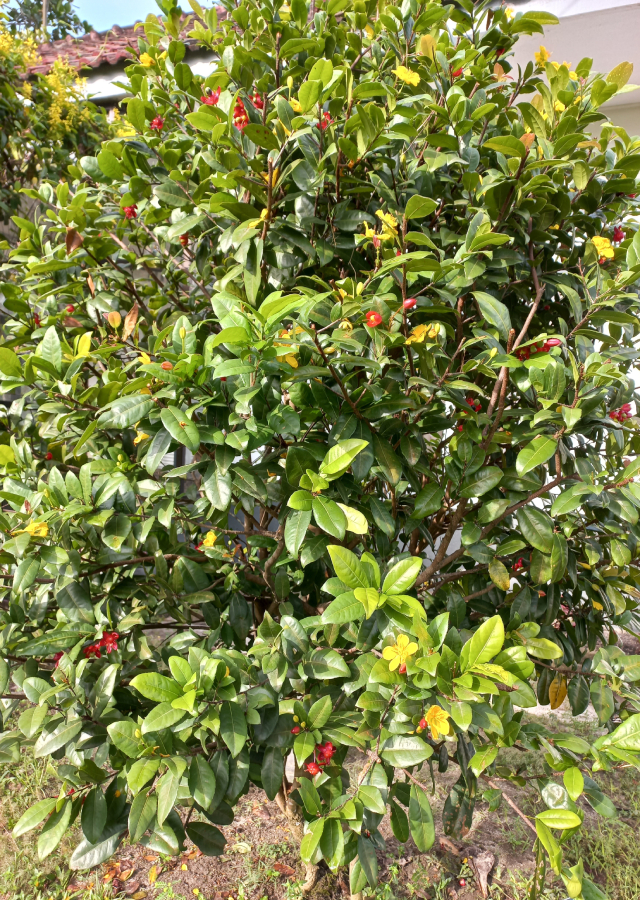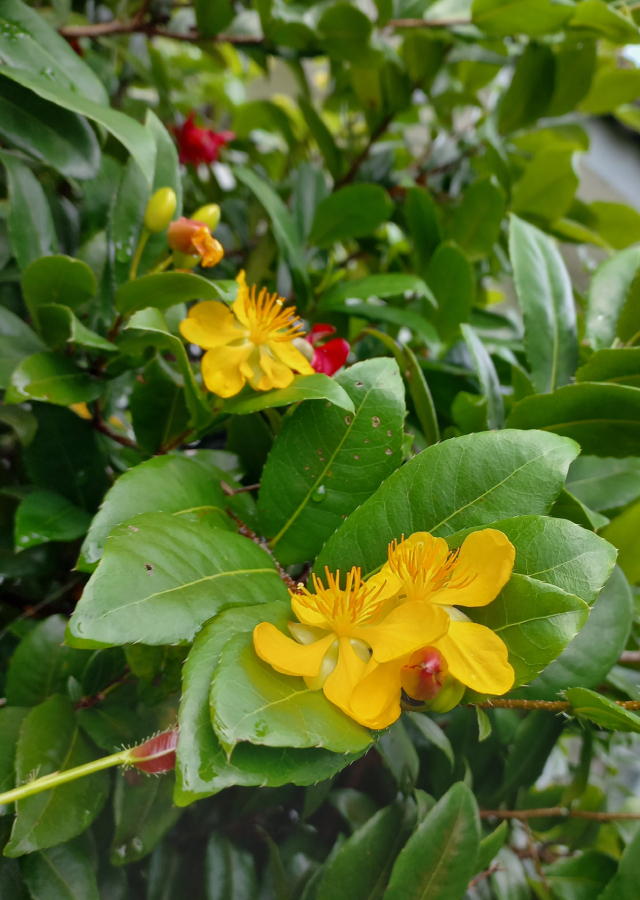Traditional Herbs from Ochna serrulata
bone_disease_in_children
- Take enough roots of the mickey mouse plant and wash them until clean.
- Boil the roots until they boil.
- Strain the boiled product.
- Drink.
wounds
- Wash the roots clean enough mickey mouse.
- Crush it until it becomes a paste.
- Apply the root paste to the injured skin.
- Also applied to relieve pain in wounds.
What is Ochna serrulata Looks like??



Parts of Ochna serrulata that could be used
- Bark
- Fruit
- Root
Ochna serrulata Distribution
Mickey mouse comes from South Africa. Mickey mouse plants have been widely cultivated outside South Africa as ornamental plants and living fences. Mickey mouse plant flowers are also used as lucky flowers for the new year in Vietnam. Because, this plant sometimes only flowers once a year. This plant is also believed to have medicinal benefits which are used as traditional medicine, such as the Zulu people in South Africa using a decoction of the roots to treat children suffering from bone disease or gangrenous proctitis.Agroecology of Ochna serrulata
This plant has good adaptability, grows well in open areas and in dense forests. Requires full sun to partial shade. At first plant growth is very slow, but once established it will grow quickly. A suitable climate is an area with a temperature that is never less than -2 �C. This means that this plant is not tolerant of frost or frost.
Morphology of Ochna serrulata
- Taproot.
- Stem round, erect, dark brown, monopodial branching.
- Leaves\u00a0simple, alternate, narrow elliptical, up to 5 cm long, with finely serrated edges, the blades are stiff and shiny dark green.
- Flowers\u00a0large, up to 4 cm, with persistent, yellowish-green sepals, turning red in fruit,\u00a0colored petals yellow and 5-lobed,\u00a0many stamens.
- The fruit is a stone fruit, oval, red.
- The seeds are black.\u00a0
Cultivation of Ochna serrulata
Propagate by seed and propagate plants with stem cuttings of medium maturity (not too old or too young).
Ochna serrulata, more details :
Chemical Content of Ochna serrulata4,4′,7-tri-O-methylisocampylospermone A,� 4′′′-de-O-methylafzelone A, and serrulone A; irisolone 4′-methyl ether,� 3',4'-dimethoxy-6,7-methylenedioxyisoflavone,� iriscumoonin 3′-methyl ether,� lophirone L,� biflavanone 1,� campylospermone A, syringaresinol,� 16α, 17-dihydroxy-ent-kauran-19-oic acid.�
Benefits of Ochna serrulata
Used in wound care, relieving pain, treating children suffering from bone disease or gangrenous proctitis. Has antibacterial, antimalarial, cytotoxic, non-mutagenic activity
Simplisia of Ochna serrulata
Another Facts for Ochna serrulata :
Synonym of Ochna serrulataDiporidium serrulatum Hochst.
Habitus of Ochna serrulata
Bush. Annual shrub reaches 1.5 m in height
Habitat of Ochna serrulata
- Forest
- Land
No comments:
Post a Comment